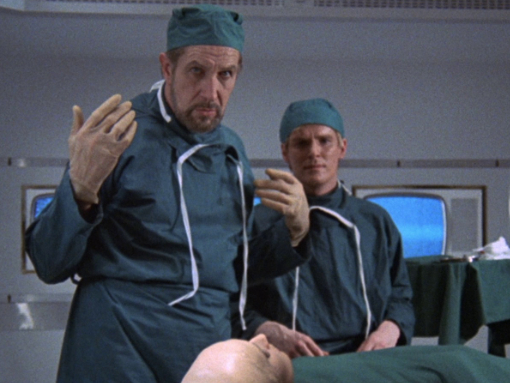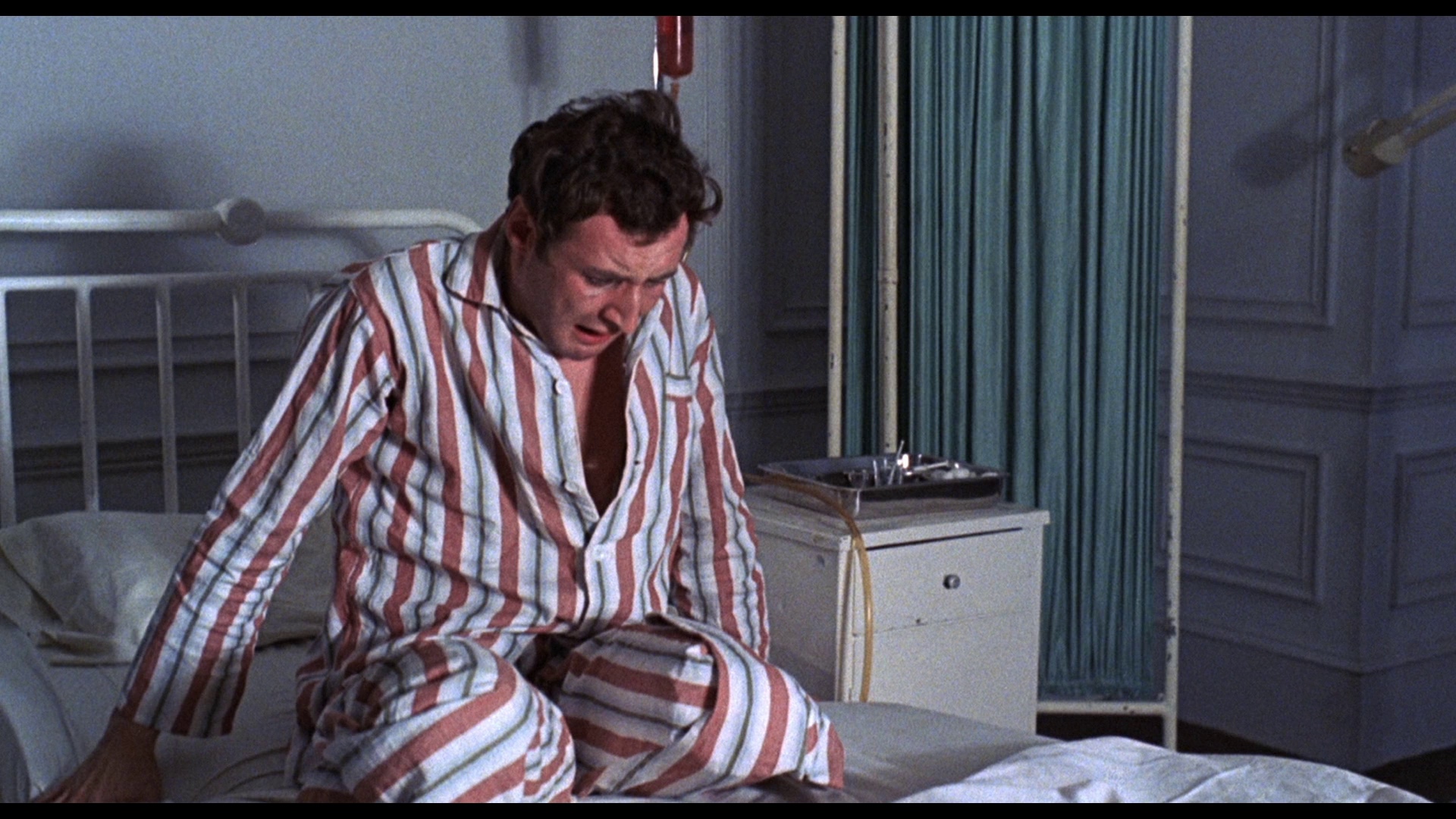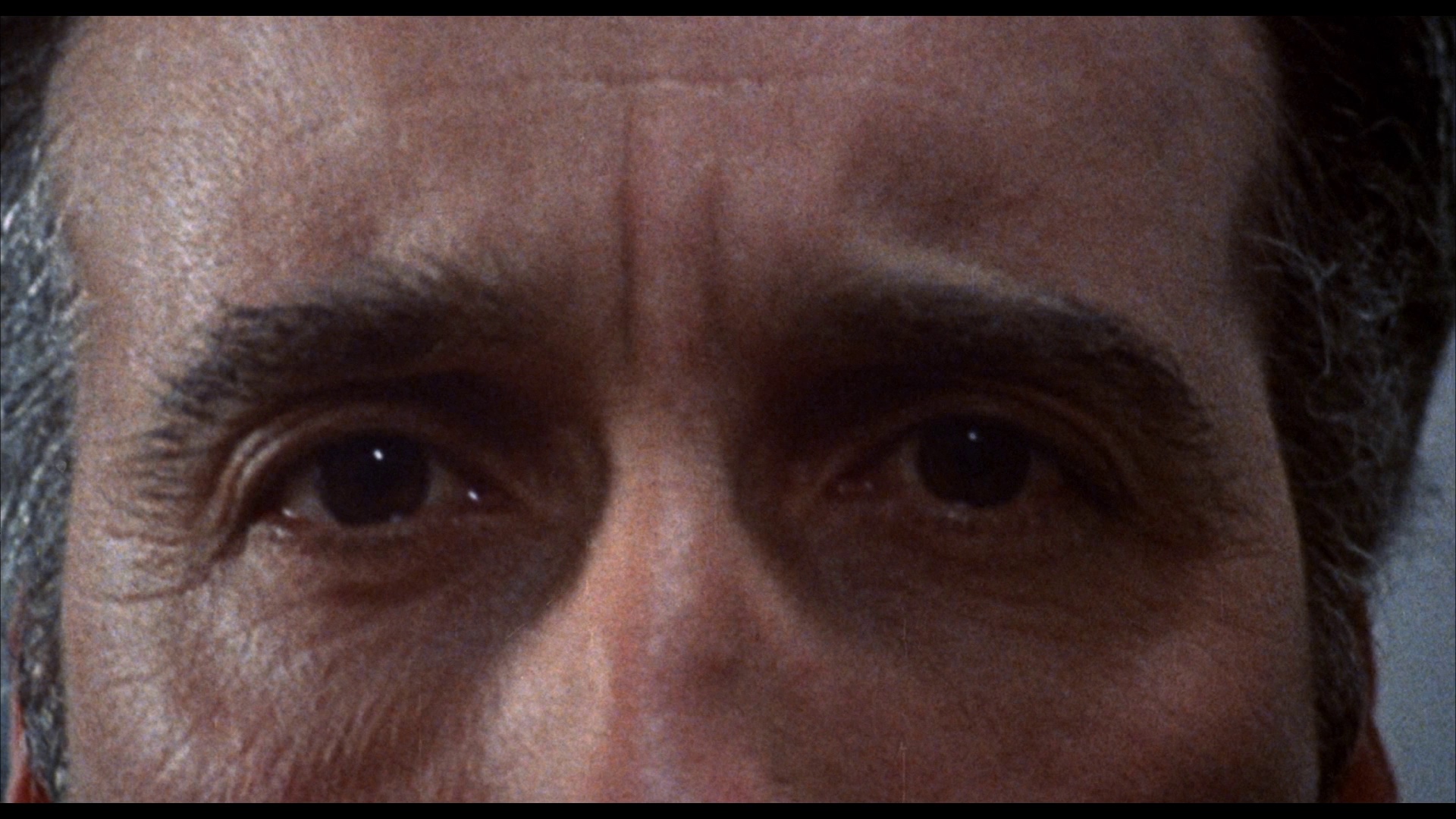Scream and Scream Again

See more details, packaging, or compare
Synopsis
A serial killer runs amok over London, draining his victims of their blood. A mad doctor performs experimental surgery on his victims, taking them apart limb by limb. A shady organisation from Eastern Europe is involved in some way while intelligence officer Fremont investigates. Bringing together the biggest horror stars of the era in Vincent Price (Witchfinder General), Christopher Lee (Dracula: Prince of Darkness) and Peter Cushing (Dr. Terror’s House of Horrors) Amicus Productions pulled out all the stops to compete with rival studio Hammer. Directed by genre specialist Gordon Hessler (The Oblong Box) Scream and Scream Again is a diabolical sci-fi horror hybrid that counted Fritz Lang as an admirer. Dabbling with conspiracies, mad doctors and killers in the dying days of swinging London, this British horror classic makes its UK Blu-ray debut, and is presented in its British and American versions.
Picture 7/10
Gordon Hessler’s Scream and Scream Again receives an all-new special edition from Radiance Films, including both the U.S. and British cuts of the film. Both versions are presented on a dual-layer disc with 1080p/24hz high-definition encodes in the aspect ratio of 1.85:1. The disc is locked to Region B and North American viewers will require players that can playback Region B content. I did perform QC work on this release.
I don’t have information about the master supplied to Radiance, and though I suspect it comes from an older restoration, both presentations look reasonably good, much to my surprise. Since both films share about 95% of the footage (if not more) and are presented here via seamless branching, they look the same quality-wise through much of their runtimes. I suspect an interpositive is the base restoration's primary source, meaning details are never razor-sharp, while the finer ones rarely pop. Yet, I can’t say the image goes all that soft outside of where the original photography or materials are the cause. Grain is heavy and can be a little clumpy in places, but thankfully, the encode is capable enough that it doesn’t further call notice to any shortcomings already present in the master. Black levels look mostly strong, best shown in some of the nightclub sequences in the film, which deliver impressive gradations and shadow detail. Still, other moments can look murky and hard to see, especially exterior nighttime shots, though this all seems baked into the materials.
Outside of minor scratches and marks, the restoration work has cleaned up much of the footage. However, it’s in this area where the two versions differ ever-so-slightly. It appears the British version is the one that went through the complete restoration, as all of the material in that version, even the exclusive stuff, keeps a consistent look throughout. The American version handles a few transitions differently, featuring one scene inexplicably zoomed in on. These sequences appear to come from a far later generation print, maybe even a theatrical print, so the quality drops considerably, and they stand out from the rest of the film. Still, it’s all relatively minor in the end.
Ultimately, the base masters are far from ideal, but Radiance has delivered them here impressively.
Update (9/20/2023): I incorrectly assumed that the British cut was the version used for the base restoration, but I was informed that it was, in fact, the American cut that was used. The material exclusive to the British version was taken from another print-sourced HD master and color-corrected to match the rest of the sequence that wraps around it. I find that more impressive as these sequences don't stand out. AIP's optical alterations to the material exclusive to the American cut are the reason for their incredibly dupey appearances.






































Audio 6/10
The film’s monaural soundtrack is presented in 2-channel DTS-HD MA. The track is clear without showing any signs of distortion. Occasionally, dialogue can sound flat but is mainly easy to hear. Music and action scenes show some impressive highs, the club sequences probably being the loudest moments in the film.
Extras 9/10
Radiance packs in a lot of material, starting with two versions of the film: The British cut and the U.S. AIP cut. I initially assumed the differences would come down to violence, but that’s not the case, as both versions feature the same levels of (now tame) violence. Instead, it looks like AIP removed a few shots from the British version that they may have found… well… silly. The more apparent alterations are the removal of a couple of shots, one of an older man seeming to spy on another set of characters (never brought up again), and another involving an absurd moment where one character manages to knock another off of a cliff after weakly tossing a stone at them from hundreds of feet away. The remaining differences come down to editing, with the ending playing a little differently and a few transitions throughout the film fading to black before opening to the next scene. The MGM logo also opens the American version, whereas the British censor board card opens the British one. As to which version is “better,” it will come down to personal preference, though I’ll note again that the material exclusive to the American cut looks far dupier than the rest of the film.
(The disc also includes a collection of deleted scenes that are a collection of the sequences excised from the British cut.)
Also newly added is an audio commentary (playing over the British version) featuring critics Kevin Lyons and Jonathan Rigby, authors of, respectively, The Encyclopedia of Fantastic Film and English Gothic: Classic Horror Cinema 1897-2015. Their track proves rather fun as they delve into the absurdity of the film, admiring the skillful editing around its multiple, barely related narratives (that sort of come together in the end) and the construction of several scenes, including what even I have to admit is a rather good car chase. They share stories from its production, noting the feelings of some of its cast (Christopher Lee was apparently not pleased with how he, Cushing, and Price were heavily marketed for the film despite each actor only receiving a few minutes of screentime if that), and talk about its surprising success, the film making an impression on younger audiences. I also appreciated their comparisons to the book, the two noting that there was one significant change that, at least for me, would have helped the film make more sense if it had been left intact (I ended up watching the movie four times, and I still don’t understand what the driving force behind the central scheme was). The two keep up the pace and move from one interesting topic to another, even venturing out to bring up other films of the period. Quite entertaining.
Radiance then includes a collection of new interviews featuring actors Christopher Matthews (7 minutes) and Julian Holloway (8 minutes), along with newly edited ones featuring editor Peter Elliott and propman Arthur Wicks (4 minutes). The Elliott/Wicks one proves a bit disappointing, especially since Elliott can’t remember much (other than the scene where Michael Gothard’s character is scaling a cliffside). Still, I rather enjoyed Holloway’s, who had a hoot with the film, laughing quite a bit as he talks about filming it. He even gets a little into Vincent Price’s discomfort in working with the producers of this film. Matthews’ contribution is a bit dry, though he fondly recounts working with Price.
The disc also features a couple of archival interviews, the first with actor Clifford Earl, recorded in 2015 and running 18 minutes, and the other with actress Uta Levka, filmed in 1999 and running 9 minutes. Both prove to be rather good, especially Levka’s, who appears shocked when she’s told of the film’s cult status. She gets a little into her contract at the time and the films she appeared in (bringing up this one and The Oblong Box) while sharing stories around Price and Lee (the latter of whom she found “smug”) and a birthday celebration thrown for her. She can’t recall much about the film, though, a common issue through these interviews, but Earl remedies that, sharing far more than anybody else, even remembering specific lines. He also talks about his surprise at seeing David Lodge on the cast list, even though he knows he doesn’t appear in the film (he suspects he may have had a role but was eventually cut out).
Ramsey Campbell then pops up for 11 minutes to talk about the film as an adaptation of the original novel, The Disoriented Man, before getting into screenwriter Christopher Wicking and director Gordon Hessler’s other work. This leads nicely into the 23-minute 2015 documentary Gentleman Gothic: Gordon Hessler at American International Pictures, featuring interviews with critics Jeff Burr, David Del Valle, Stever Haberman, and C. Courtney Joyner. Hessler even shows up, and the short documentary does an admirable job at looking into his early work, starting with Alfred Hitchcock Presents and then moving on through to Murders in the Rue Morgue, where Jason Robards replaced Price once the actor was sick of doing all of these “faux Poe” films. I will admit to a slight feeling of disappointment the documentary was only focused on his earlier AIP work, choosing to ignore his late career when he would team with Sho Kosugi to make the classics Pray for Death and Rage of Honor, but otherwise, I quite liked this.
The disc next features a reconstruction of the 17-minute Super 8 Version, using footage from the most recent restoration. One thing that gets mentioned a few times in the features is how attempts at cutting the film down more proved futile because cutting out or gently trimming specific plot threads made the film completely indecipherable, so it shouldn’t be a surprise to learn that this version doesn’t make a lick of sense. Of course, it’s more a highlight reel than anything, which is what I always suspected these versions were anyway. It features a trimmed opening sequence before hurrying through the murder subplot and ending suddenly but does make sure to include most of the car chase (which, again, is quite good), along with some of the nudity and violence.
Finally, the disc closes with the film’s trailer and an extensive image gallery featuring several production photos, lobby cards, posters, and scans from the press book. You’ll also find Mick Garris’ trailer commentary, where the filmmaker talks about how the film and how the trailer misrepresents it, primarily its pushing of Price, Lee, and Cushing, who are barely in the film. The limited edition also includes a booklet, though I do not have a copy yet.
In all, it's a fun set of features assembled by people that clearly have a soft spot for the film.
Closing
A fun special edition packed with an assortment of features that will keep fans busy.






